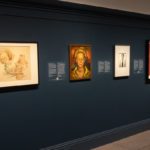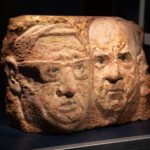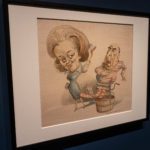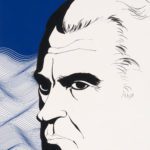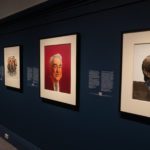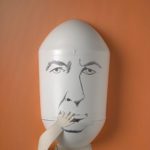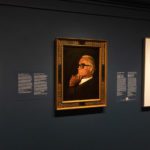‘Watergate: Portraiture and Intrigue’ at the National Portrait Gallery (photos)
By • March 28, 2022 0 2864
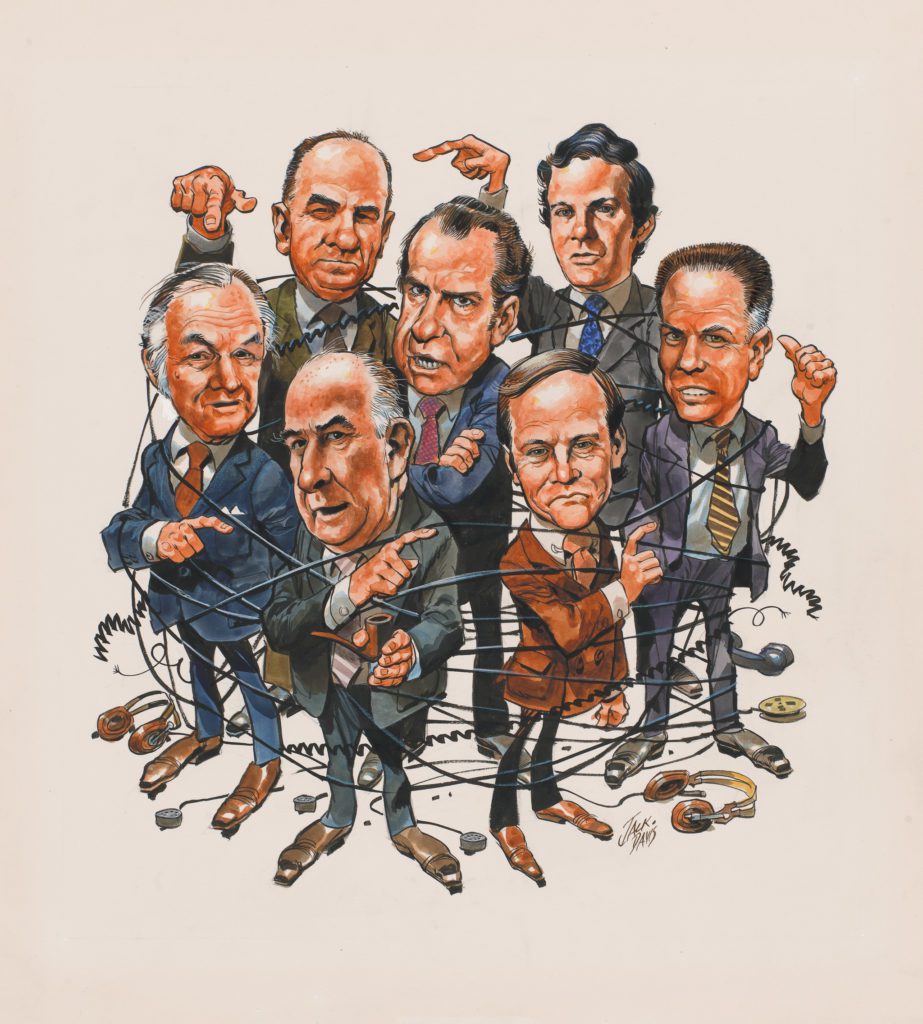
It was no ordinary crime. Some private campaign documents were photographed and telephones were wiretapped, but the burglary was foiled by an alert security guard. After the five perpetrators were arrested, the press and the U.S. Department of Justice connected the cash found on them at the time to President Nixon’s re-election campaign committee.
It was June 17th, 1972, and the incident at the Democratic National Committee headquarters, then located on the sixth floor of the Watergate Office Building in Washington D.C., led to an investigation that would reveal numerous abuses of power by the Nixon administration. It would ultimately lead to Nixon’s resignation (on Aug. 9, 1974) and the imprisonment of several of his associates — and would make household names of many others connected with the affair.
The National Portrait Gallery in Washington, D.C., on Friday unveiled a new exhibition titled “Watergate: Portraiture and Intrigue” to commemorate the 50th anniversary of the Watergate scandal. “This break-in quickly escalated to a political and legal crisis that reached the highest levels of the United States government and it became a subject of intrigue by the general public and artists alike,” said acting senior historian Kate Clarke Lemay, the exhibit’s curator.
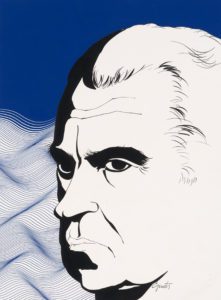
Richard Nixon: 1973 ink drawing by George Giusti.
“Watergate: Portraiture and Intrigue,” located on the first floor of the Smithsonian’s National Portrait Gallery (NPG), will be on view through Sept. 5, 2022.
Every item in the exhibit was sourced from the NPG’s permanent collection and selected for both historical and artistic merit.
The news media would play a key role in unraveling the scandal. Time Magazine alone devoted more than 40 Watergate related cover stories — and portraits — to the scandal, of which 12 portraits are part of the exhibit. Investigative reporters Bob Woodward and Carl Bernstein helped The Washington Post win the Pulitzer Prize for Public Service in 1973, based largely on their reporting of the emerging scandal and President Nixon’s attempts not only to cover-up the affair but to order the CIA to block the FBI’s investigation of the original break-in.
Included are works by artists Richard Avedon, Marisol Escobar, George Guisti and Dirck Halstead; and illustrators and political cartoonists of the era, including Jack Davis, Patrick Oliphant and Edward Sorel.
Among the 23 works on exhibit are portraits of major players such as Senator Barry Goldwater, Washington Post publisher Katharine Graham, Attorney General John Mitchell and whistle-blower John Dean, plus some others on the periphery who would play key roles, such as “Deep Throat” informant Mark Felt, Nixon’s secretary Rose Mary Woods and John Mitchell’s wife Martha.
The National Portrait Gallery, located at 8th and G Streets NW in Washington, D.C., is open to the public Thursday–Sunday 11:30 a.m.–7:00 p.m. Admission to the National Portrait Gallery and all other Smithsonian museums in the District is free.
The “Watergate: Portraiture and Intrigue” exhibit runs through Sept. 5, 2022. For more information go to https://npg.si.edu/exhibition/watergate.
Click on the photo icons below for a slideshow featuring portraits from “Watergate: Portraiture and Intrigue” at the National Portrait Gallery.
- Richard Nixon: 1972 Time Magazine photo by Dirck Halstead.
- Kate Clarke Lemay, the exhibit’s curator. Photo by Jeff Malet.
- John Wesley Dean, III: 1973 painting by Stanislaw Zagorski.
- 23 portraits of Watergate players are on exhibit. Photo by Jeff Malet.
- A 1972 spin-off of the famous Mount Rushmore by artist Marisol Escobar: Instead of George Washington and others, it’s Kissinger on the left and Nixon on the right. Photo by Jeff Malet.
- Katharine Graham with Attorney General John Mitchell: “in the wringer” 1972 drawing by Edward Sorel. Photo by Jeff Malet.
- Martha Elizabeth Beall Mitchell: 1970 painting by Jan De Ruth; gift of Time Magazine.
- One of the most controversial episodes of the Watergate scandal, the so-called “Saturday Night Massacre” came on October 20, 1973, when embattled President Richard Nixon fired Special Prosecutor Archibald Cox and accepted the resignations of Attorney General Elliot Richardson and Deputy Attorney General William Ruckelshaus. Photo by Jeff Malet.
- Richard Nixon: 1973 ink drawing by George Giusti.
- In center, Senator Samuel Ervin who led the hearings: His 1973 drawing by Robert M. Peak. Photo by Jeff Malet.
- John Newton Mitchell: 1973 Sculpture by George Giusti. It was made from a bleach bottle.
- Barry Goldwater: told Nixon he would be impeached if he did not resign. His 1983 painting by John Kirthian Court. Photo by Jeff Malet.)
- Watergate Breaks Open: 1973 painting by Jack Davis includes portraits of John Dean, H.R. Haldeman, James McCord, Jeb Magruder, and John Mitchell.l, Richard M. Nixon and Maurice Stans.




